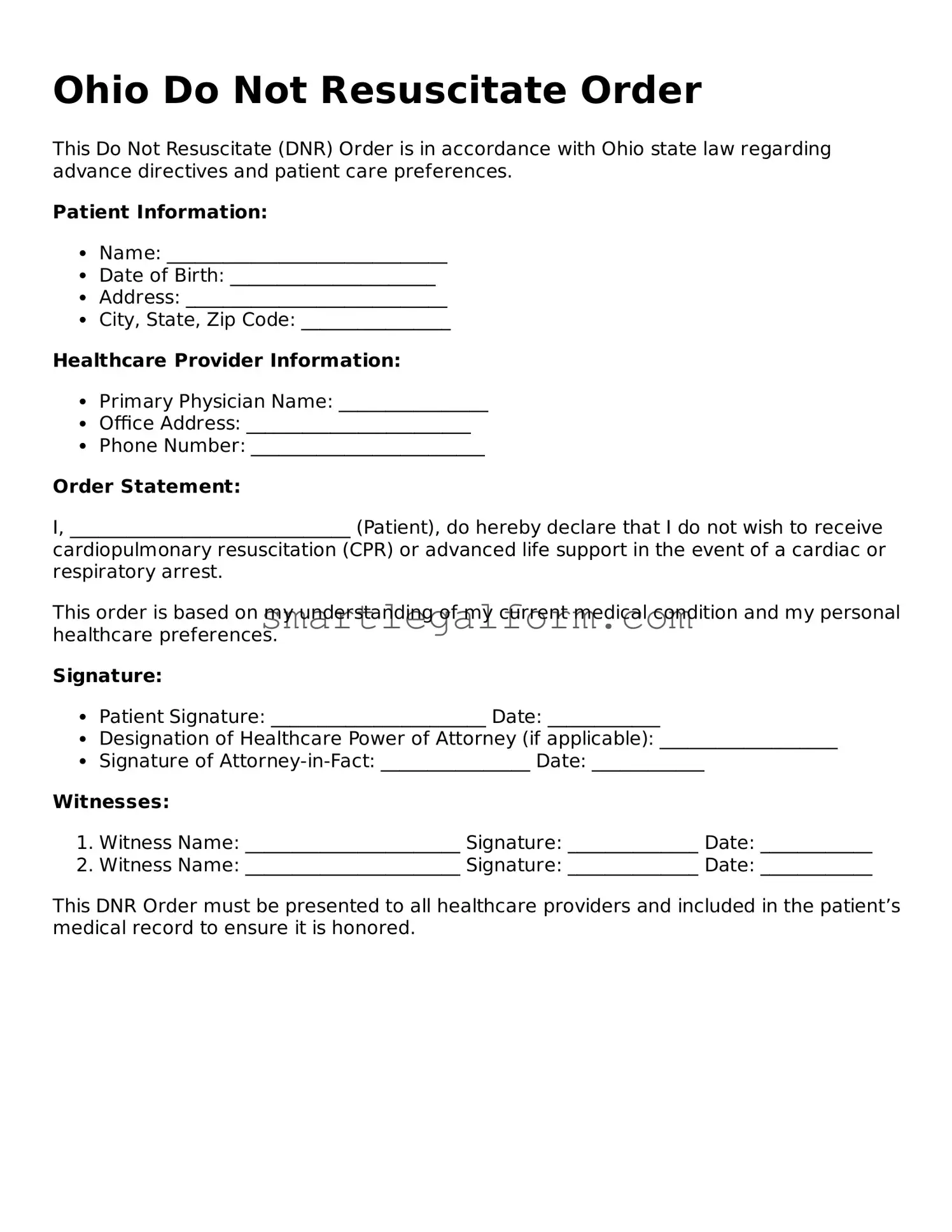Ohio Do Not Resuscitate Order
This Do Not Resuscitate (DNR) Order is in accordance with Ohio state law regarding advance directives and patient care preferences.
Patient Information:
- Name: ______________________________
- Date of Birth: ______________________
- Address: ____________________________
- City, State, Zip Code: ________________
Healthcare Provider Information:
- Primary Physician Name: ________________
- Office Address: ________________________
- Phone Number: _________________________
Order Statement:
I, ______________________________ (Patient), do hereby declare that I do not wish to receive cardiopulmonary resuscitation (CPR) or advanced life support in the event of a cardiac or respiratory arrest.
This order is based on my understanding of my current medical condition and my personal healthcare preferences.
Signature:
- Patient Signature: _______________________ Date: ____________
- Designation of Healthcare Power of Attorney (if applicable): ___________________
- Signature of Attorney-in-Fact: ________________ Date: ____________
Witnesses:
- Witness Name: _______________________ Signature: ______________ Date: ____________
- Witness Name: _______________________ Signature: ______________ Date: ____________
This DNR Order must be presented to all healthcare providers and included in the patient’s medical record to ensure it is honored.
